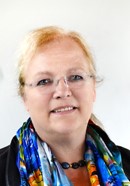The labour market integration of refugees in Germany

Gisela Färber,
Professor Emerita for Public Finance,
German University of Administrative Sciences Speyer,
Germany
Director,
Research Centre for Civil Service, German Research Institute for Public Administration Speyer,
Germany
Germany experienced since 2012 a net immigration of 5 million people, of which 1.5 million were refugees from non-European countries, most of them from Afghanistan, Eritrea, Iraq, Iran, Nigeria, Pakistan, Somalia and Syria. 247 thousands immigrants of that group meanwhile left the country again. Particularly in 2015 and 2016, when the stream of refugees arrived, right wing populists criticized the tremendous social costs of 80 – 100 billion Euros since 2015.
Numerical modelling however show that the public sector financial balance for refugees is positive in the long run if they are successfully integrated into the labour market. As most immigrants do not have sufficient German language skills and their school and vocational education is in average much lower than the requirements of the labour market, they need a longer period of training and – particularly for the younger – apprenticeship before they can leave the regime of basic security for job seekers and cover their and their family’s living expenses by their own work. From then they pay income taxes and social insurance contributions which exceed the social transfer payments they received in the beginning after their arrival and later from the pension scheme. The calculations however also show that a failed labour market integration provides high net social transfer payments. Therefore, the former policies which aimed at keeping asylum seekers out of jobs as long as possible in order to avoid incentives for immigration are not only unsocial, but also extremely costly for public budgets.
Progress has been made with regard to formal recognition as asylees or refugees with right to stay. 2 years after the immigration only 8% had not finished the procedure and are still waiting for a permit for a longer stay. The majority of refugees has acquired knowledge in German language. Meanwhile the participation of women in language courses which was low in the beginning has caught up and is still inadequate only for women with children aged less than four years.
Five years after the big wave of refugee immigration it is time to have a look on the achieved labour market integration of refugees:
- The number of employees from the asylum seekers countries has grown from 70.5 thousands in January 2015 to 361,400 in March 2020. About 30% of the refugees arrived since 2012 have found a job.
- The number of registered unemployed job seekers in that group increased in the same period from 113,234 to 470,687. 38% are still searching for an employment.
In March 2020, many refugees were still dependent from social transfer payments. The recipients of basic security for job seekers grew from 150,640 in January 2015 to 629,500. 196,000 were registered as unemployed. About 262,000 were in education or special training programs. 72,000 stayed at home for childcare and nursing. 60,000 refugees have been working as low income earners receiving additional transfer payments to achieve the guaranteed minimum income.
Education is crucial for the integration of refugees who in average have had a much lower level of years in school, vocational training or even tertiary education. 11% had never attended school, 14% only a primary school. For a successful labour market integration however a vocational training or another formal qualification is necessary. The participation of refugees in education has increased, more for male, less for female refugees, in general depending from human capital former acquired before. Particularly men participated in a vocational training.
Statistics show that five years after their immigration about 60% of the refugees have started working in Germany. During the last years, they have met a labour market situation with an increasing number of jobs in total, more qualified workers leaving for retirement than young people finishing their education. Enterprises have lamented a skilled labour shortage since several years. Refugees, particularly young male, help to close the labour market gap, rolling in apprenticeships in small and medium enterprises in smaller towns which often have not the best position in the competition for skilled labour force. German federal government has established an exceptional leave to remain for young people without a formal asylum or refugee status in case they have started a vocational training contract. Problems remain for young women who show a lower participation in language and training courses, probably because of cultural features of their home countries.
To sum up, Germany is on the right path to integrate refugees who will probably stay for their lives and raise their families here. Their children will hopefully enjoy a better education and help to delay the aging of the German population. Last but not least, they will in the long run help to stabilize the balance of public sector budgets.
Email: faerber@uni-speyer.de
Expert article 2830
> Back to Baltic Rim Economies 4/2020
To receive the Baltic Rim Economies review free of charge, you may register to the mailing list.
The review is published 4-6 times a year.
